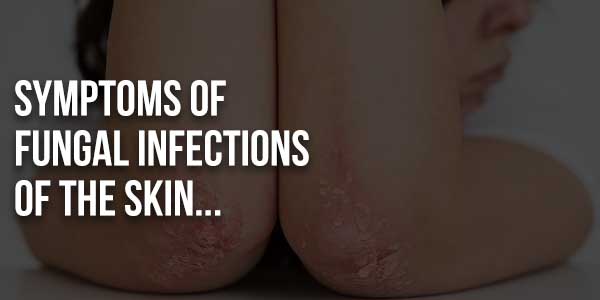
Fungal infections of the skin are a common problem that affects millions of people worldwide. These infections are caused by various types of fungi that thrive in warm, moist environments such as locker rooms, swimming pools, and showers and we can use candid cream usage. Fungal infections of the skin can be uncomfortable and unsightly, and if left untreated, can lead to serious health complications. In this article, we will discuss the common symptoms of fungal infections of the skin, their causes, and treatments.
Table of Contents
What Are Fungal Infections Of The Skin?
Fungal infections of the skin are caused by different types of fungi for Candid Tube. They can affect any part of the body but are most commonly found on the feet, hands, groin, and scalp while you are sitting in your office or any business. These infections are highly contagious and can be spread through direct contact with an infected person or contaminated objects such as towels, clothes, and surfaces. Symptoms of Fungal Infections of the Skin: The symptoms of fungal infections of the skin vary depending on the type of fungus and the affected area.
Some Of The Common Symptoms Include:
Redness And Itching:
Fungal infections of the skin can cause redness, itching, and irritation. The affected area may become inflamed and tender to the touch. In some cases, the skin may also crack, peel, or blister. Scaling and Flaking: Fungal infections of the skin can cause the skin to become dry, scaly, and flaky. The affected area may also develop a white, powdery substance on the surface.
Odor:
Fungal infections of the skin can produce a foul odor, especially when they occur in areas where sweat is produced, such as the feet or groin.
Discoloration:
Fungal infections of the skin can cause the affected area to become discolored. The skin may turn darker or lighter than the surrounding skin. In some cases, the affected area may also develop a yellowish or greenish tinge.
Causes Of Fungal Infections Of The Skin:
Fungal infections of the skin are caused by different types of fungi.
Some Of The Common Types Include:
Dermatophytes:
These fungi are the most common cause of fungal infections of the skin. They can infect the skin, hair, and nails.
Yeast:
Yeast infections are caused by a type of fungus called Candida. They can affect the skin, mouth, and genital area.
Molds:
Molds are a type of fungus that can cause skin infections, especially in people with weakened immune systems.
Some of the factors that increase the risk of developing fungal infections of the skin include:
- The warm and humid climate
- Sweating heavily
- Wearing tight-fitting clothes
- Sharing personal items such as towels and clothes
- Walking barefoot in public places such as locker rooms and showers
- Having a weakened immune system
- Having diabetes or other medical conditions that affect blood flow

Treatment Of Fungal Infections Of The Skin:
Fungal infections of the skin can be treated with antifungal medications. These medications can be applied topically or taken orally. In addition to medication, it’s important to keep the affected area clean and dry.
Here are some common treatments for fungal infections of the skin:
Topical Antifungal Medications:
Creams, ointments, and powders containing antifungal medications such as clotrimazole, miconazole, terbinafine, and ketoconazole can be applied to the affected area. These medications work by killing the fungi or preventing their growth.
Oral Antifungal Medications:
In severe cases, oral antifungal medications may be prescribed. These medications include fluconazole, itraconazole, and terbinafine. They are usually taken for several weeks or months, depending on the severity of the infection.
Home Remedies:
Some natural remedies can help relieve the symptoms of fungal infections of the skin. For example, tea tree oil has antifungal properties and can be applied topically to the affected area. Garlic and yogurt also have antifungal properties and can be added to the diet or applied topically to the affected area.
Prevention Of Fungal Infections Of The Skin:
Fungal infections of the skin can be prevented by taking some simple precautions. Here are some tips to prevent fungal infections of the skin:
Keep The Skin Clean And Dry:
Wash the affected area with soap and water and dry it thoroughly afterward. Avoid wearing tight-fitting clothes and shoes that trap moisture. Avoid sharing personal items: Don’t share towels, clothes, or other personal items with others to reduce the risk of spreading the infection. Wear protective gear: If you are participating in activities that involve sweating or exposure to moist environments, wear protective gear such as sandals or shower shoes to avoid contact with contaminated surfaces. Keep your immune system strong: A healthy immune system can help prevent fungal infections of the skin. Exercise regularly, eat a balanced diet, and get enough sleep to maintain a healthy immune system. Seek medical attention: If you suspect that you have a fungal infection of the skin, seek medical attention as soon as possible. Early treatment can prevent the infection from spreading and reduce the risk of complications.
In conclusion, fungal infections of the skin are a common problem that can cause discomfort and unsightly symptoms. They are caused by different types of fungi and can affect any part of the body. Treatment involves antifungal medications and keeping the affected area clean and dry. Prevention includes taking simple precautions such as keeping the skin clean and dry, avoiding sharing personal items and wearing protective gear. If you suspect that you have a fungal infection of the skin, seek medical attention as soon as possible.














Be the first to write a comment.